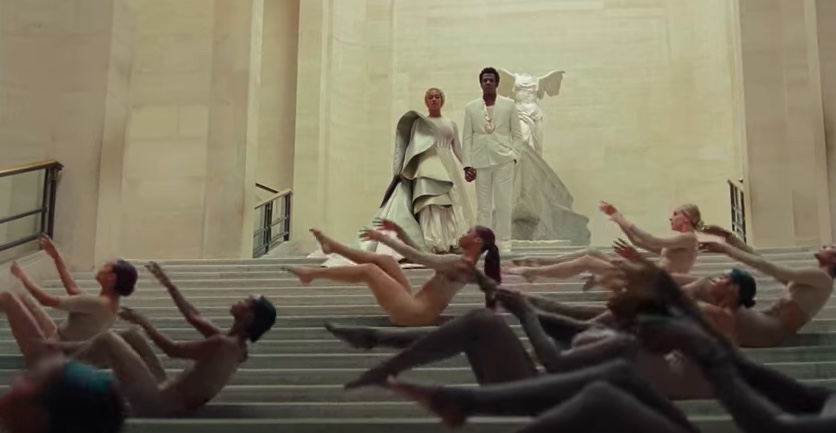[ad_1]
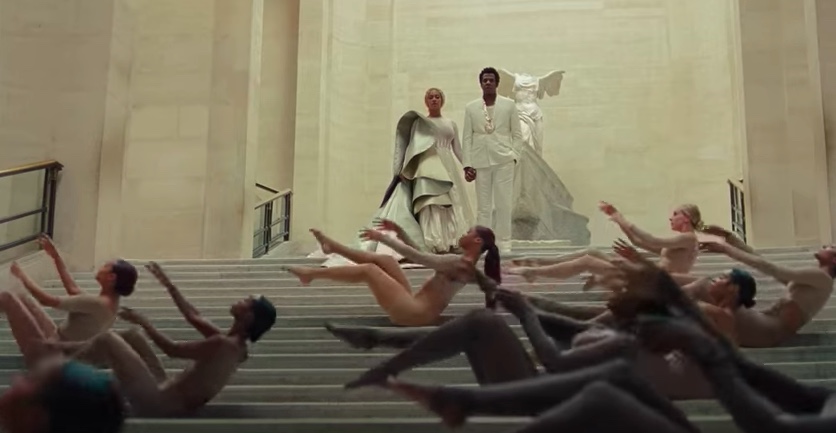
A still from the new video for Beyoncé and Jay-Z’s song “Apeshit.”
What a Saturday night! Following a concert in London, Beyoncé and Jay-Z released a new collaborative album titled Everything Is Love, an additional track titled “Salud!,” and a video for one of their freshly minted tracks, “Apeshit,” which was largely filmed at the Louvre in Paris and which includes dramatic shots of numerous masterpieces from the museum’s collection.
The paintings and sculptures that appear in the video, often in luscious detail, span more than three millennia, and they focus particularly on the picturing and projection of power, the conception and regulation of female beauty, and the depiction of suffering. Leonardo’s Mona Lisa (ca. 1503–06) is the star of the show, the couple posing while viewing it (as they have in the past) and a woman combing a man’s hair as he sits in a chair in front of the work.
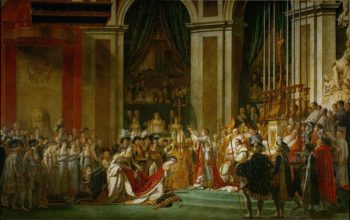
Jacques-Louis David’s Coronation of Napoleon (1805–07).
The leading couple and their accompanying dancers also spend time with iconic works like the Great Sphinx of Tanis (ca. 2600 B.C.), the Venus de Milo (101 B.C.), The Winged Victory of Samothrace (190 B.C.), and David’s Coronation of Napoleon (1805–07), their movements and poses sometimes loosely mirroring those of figures in the artworks.
Occasionally the lyrics and paintings cleverly sync up, too, as when Beyoncé sings, “Sippin’ my favorite alcohol/Got me so lit I need Tylenol” while details of wine being generously poured in Veronese’s The Wedding at Cana (1563) flash on screen.
Perhaps the most intriguing inclusion is a close-up shot of Marie-Guillemine Benoist’s Portrait of a Negress (1800) near the end of the video. Possibly showing a servant brought to France from the Antilles by Benoist’s brother-in-law, it was painted in 1800, after the abolition of slavery by France but just as Napoleon was working to reinstate it in the nation’s colonies.
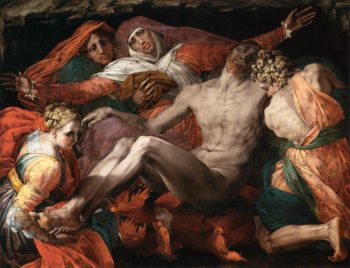
Rosso Fiorentino’s Pietà (1537–40).
Doris Y. Kadish, a scholar on French slavery, has written that, while some have read the woman in Benoist’s painting as an allegory for the republic (she is surrounded by the tricolor) or noted her resolute gaze, the art historian Griselda Pollock has compared the image to that of a scene in a slave auction, and the art historian Darcy Grimaldo Grigsby has written that its offensive title, which dehumanizes the sitter, “exercises a form of mastery or subordination: the sitter is robbed, like a slave, of her person’s property.”
The video crops Benoist’s portrait so that the servant’s exposed breast is no longer visible. (A red sash tied around a white swatch of fabric that covers the lower part of her body has also been cut.) The unknown sitter stares out in the video, taking up the full screen, her hair wrapped in a turban, her eyes angled slightly to her right as she shows one golden hoop earring (a pose that brings to mind Kerry James Marshall’s Untitled (Painter), 2009).
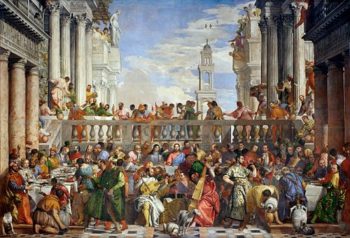
Veronese’s The Wedding at Cana (1563).
The song and video are also pointedly political at some moments, as when Jay-Z declares, “I said no to the Super Bowl/You need me, I don’t need you”—lines that are accompanied by a number of young black men kneeling.
Other works that are visible in the video include staggering instances of pain and perseverance, like Géricault’s The Raft of the Medusa (1818–19), Rosso Fiorentino’s Pietà (1537–40), and Ary Scheffer’s Francesca da Rimini and Paolo Malatesta Appraised by Dante and Virgil (1835).
This is far from the first time that canonical visual art has played a role in Beyoncé and Jay-Z’s collaborative work. Guesting on his wife’s 2013 track “Drunk in Love,” to name one example, the rapper recalled, “Foreplay in the foyer/fucked up my Warhol.” The two are also known to be art collectors, and works by Hammons and Richard Prince are visible in the 2014 video for Beyoncé’s song 7/11.
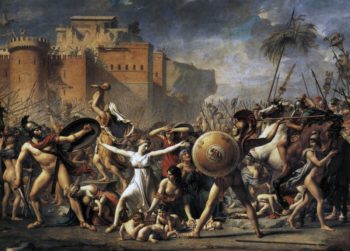
David’s Intervention of the Sabine Women, 1799.
Beyond showing the art, the video also provides an impressive little tour of the Louvre, from the controversial glass pyramid installed by I. M. Pei in its courtyard as part of his 1989 expansion to the soaring ceilings of the Galerie d’Apollon, in which one zoomed-in shot of its zodiac imagery includes the word Virgo, which is Beyoncé’s astrological sign.
In short, there’s a lot to parse here, with even more works with complicated historical, political, and biographical histories getting screen time, like David’s Oath of the Horatii (1784) and his Intervention of the Sabine Women (1799). The video follows below, with more images of works that appear in it following after that.
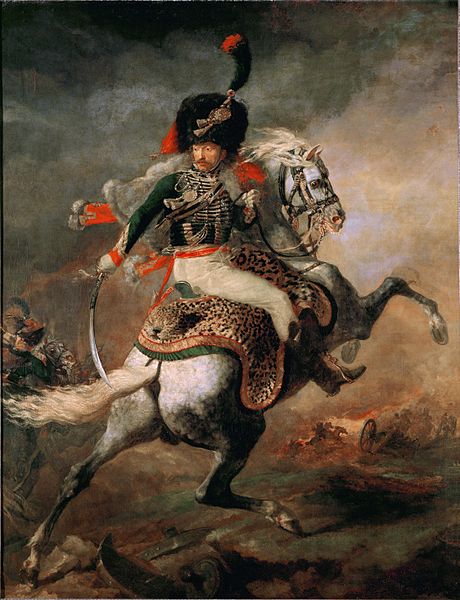
Géricault’s The Charging Chasseur (ca. 1812).
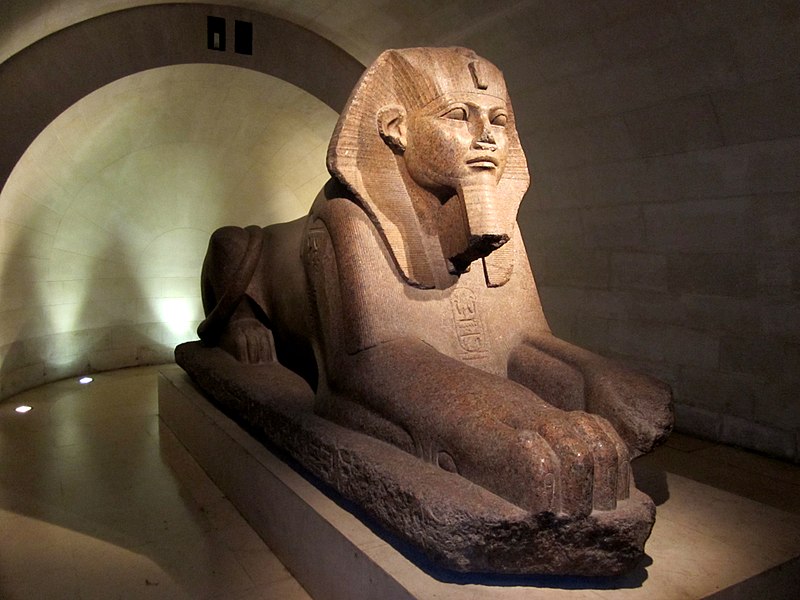
The Great Sphinx of Tanis, ca. 2600 BC).
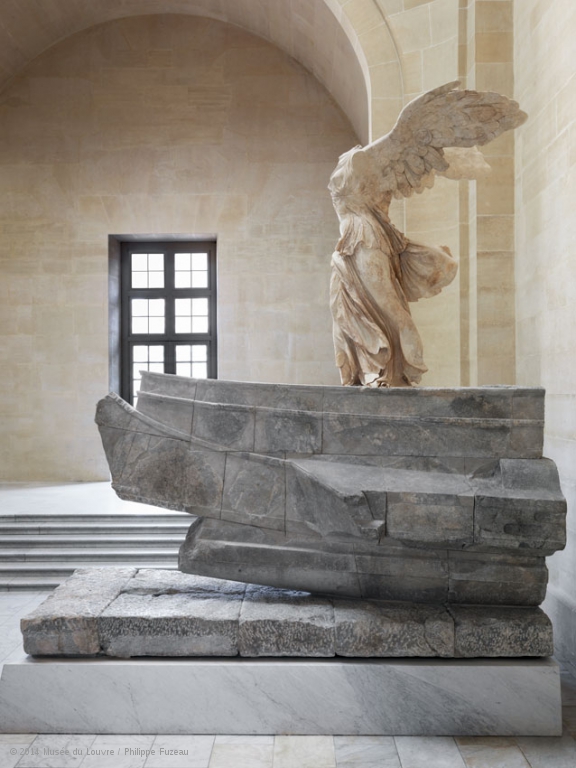
The Winged Victory of Samothrace.
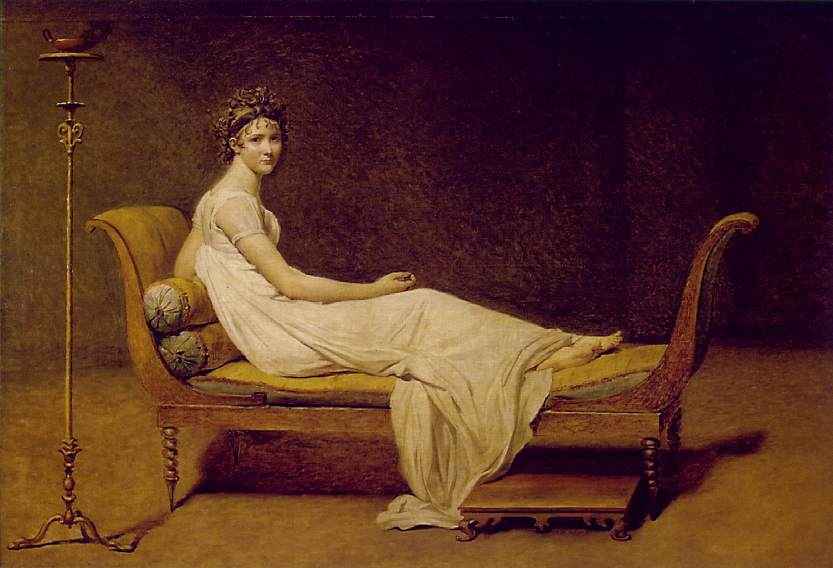
David’s Portrait of Madame Récamier (1800).
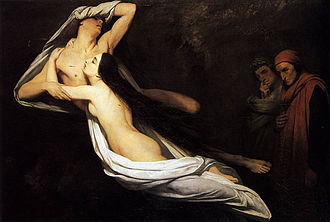
From the Wallace Collection in London: Ary Scheffer’s Francesca da Rimini and Paolo Malatesta Appraised by Dante and Virgil(1835). A different version, not pictured, hangs at the Louvre.
[ad_2]
Source link

